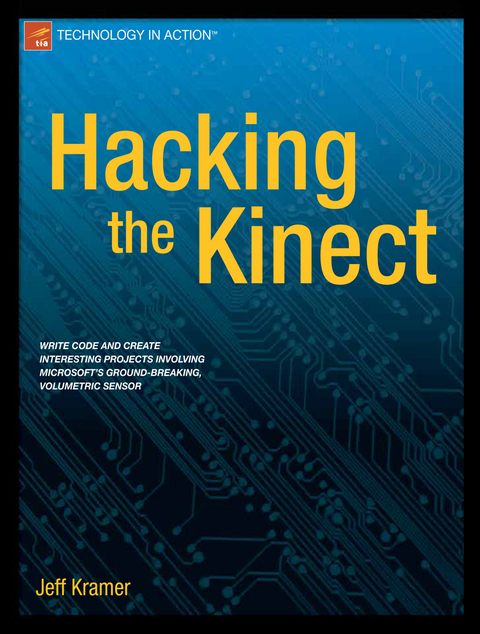
Hacking the Kinect
Seiten
2012
|
1st ed.
Apress (Verlag)
978-1-4302-3867-6 (ISBN)
Apress (Verlag)
978-1-4302-3867-6 (ISBN)
Hacking the Kinect is the technogeek’s guide to developing software and creating projects involving the groundbreaking volumetric sensor known as the Microsoft Kinect. Microsoft’s release of the Kinect in the fall of 2010 startled the technology world by providing a low-cost sensor that can detect and track body movement in three-dimensional space. The Kinect set new records for the fastest-selling gadget of all time. It has been adopted worldwide by hobbyists, robotics enthusiasts, artists, and even some entrepreneurs hoping to build business around the technology.
Hacking the Kinect introduces you to programming for the Kinect. You’ll learn to set up a software environment, stream data from the Kinect, and write code to interpret that data. The progression of hands-on projects in the book leads you even deeper into an understanding of how the device functions and how you can apply it to create fun and educational projects. Who knows? You might even come up with a business idea.
Provides an excellent source of fun and educational projects for a tech-savvy parent to pursue with a son or daughter
Leads you progressively from making your very first connection to the Kinect through mastery of its full feature set
Shows how to interpret the Kinect data stream in order to drive your own software and hardware applications, including robotics applications
Hacking the Kinect introduces you to programming for the Kinect. You’ll learn to set up a software environment, stream data from the Kinect, and write code to interpret that data. The progression of hands-on projects in the book leads you even deeper into an understanding of how the device functions and how you can apply it to create fun and educational projects. Who knows? You might even come up with a business idea.
Provides an excellent source of fun and educational projects for a tech-savvy parent to pursue with a son or daughter
Leads you progressively from making your very first connection to the Kinect through mastery of its full feature set
Shows how to interpret the Kinect data stream in order to drive your own software and hardware applications, including robotics applications
Jeff Kramer is a research programmer at the National Robotics Engineering Center at Carnegie Mellon University in Pittsburgh, Pennsylvania (http://www.rec.ri.cmu.edu). He has been involved in robots since he was just 12 years old.
* Introducing the Kinect * Hardware * Software * Computer Vision * Gesture Recognition * Voxelization * Introducing Point Clouds * Enhancing Our Point Clouds * Object Modeling and Detection * Multiple Kinects
| Erscheint lt. Verlag | 2.4.2012 |
|---|---|
| Zusatzinfo | XIV, 268 p. |
| Verlagsort | Berlin |
| Sprache | englisch |
| Maße | 178 x 254 mm |
| Themenwelt | Informatik ► Grafik / Design ► Digitale Bildverarbeitung |
| Informatik ► Software Entwicklung ► Spieleprogrammierung | |
| Informatik ► Software Entwicklung ► User Interfaces (HCI) | |
| Informatik ► Weitere Themen ► Hardware | |
| ISBN-10 | 1-4302-3867-4 / 1430238674 |
| ISBN-13 | 978-1-4302-3867-6 / 9781430238676 |
| Zustand | Neuware |
| Haben Sie eine Frage zum Produkt? |
Mehr entdecken
aus dem Bereich
aus dem Bereich
Modelle für 3D-Druck und CNC entwerfen
Buch | Softcover (2022)
dpunkt (Verlag)
CHF 48,85
alles zum Drucken, Scannen, Modellieren
Buch | Softcover (2024)
Markt + Technik Verlag
CHF 34,90


